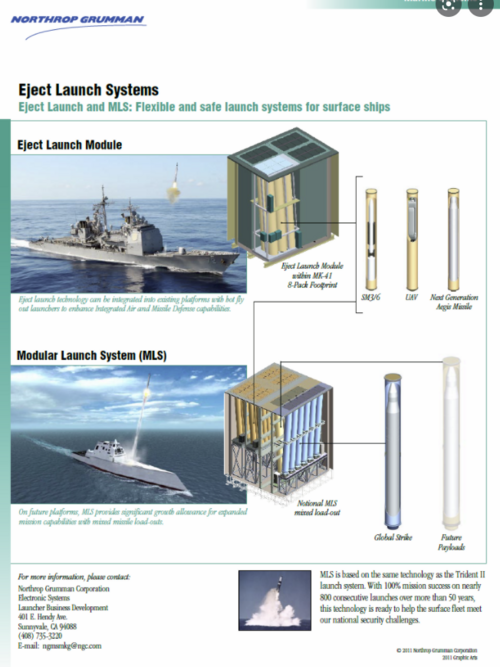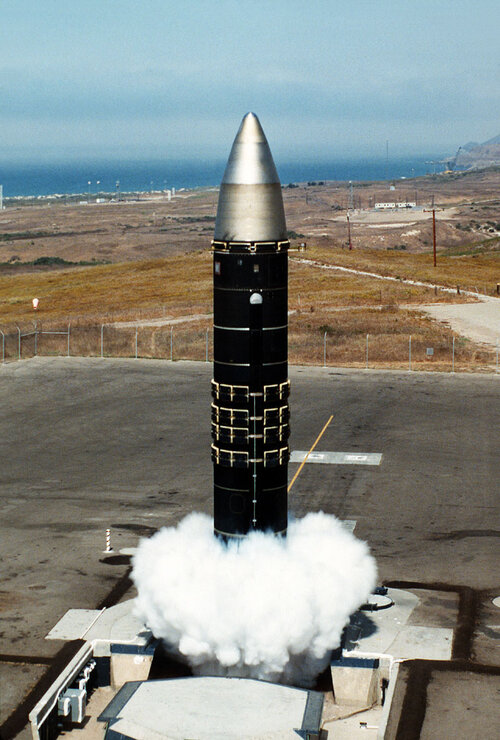I understand that the Navy version of LRHW is meant to be cold-launched, so they might still want to cant the MACs a few degrees from the vertical to eject any LRHWs will failed motors over the side, rather than having several tons of solid-rocket motor fall back on the deck.
USN cold-launch isn't done with a little compressed gas bottle, remember that it's designed for throwing missiles to the surface from a submerged submarine. They flash boil water into steam with an explosive charge, on a surface vessel these suckers will come out of the tubes
fast. With some aero surfaces, either on CPS itself or the pusher plate, the guidance system should be able to steer it over the side pretty well in the event of booster no-start.








